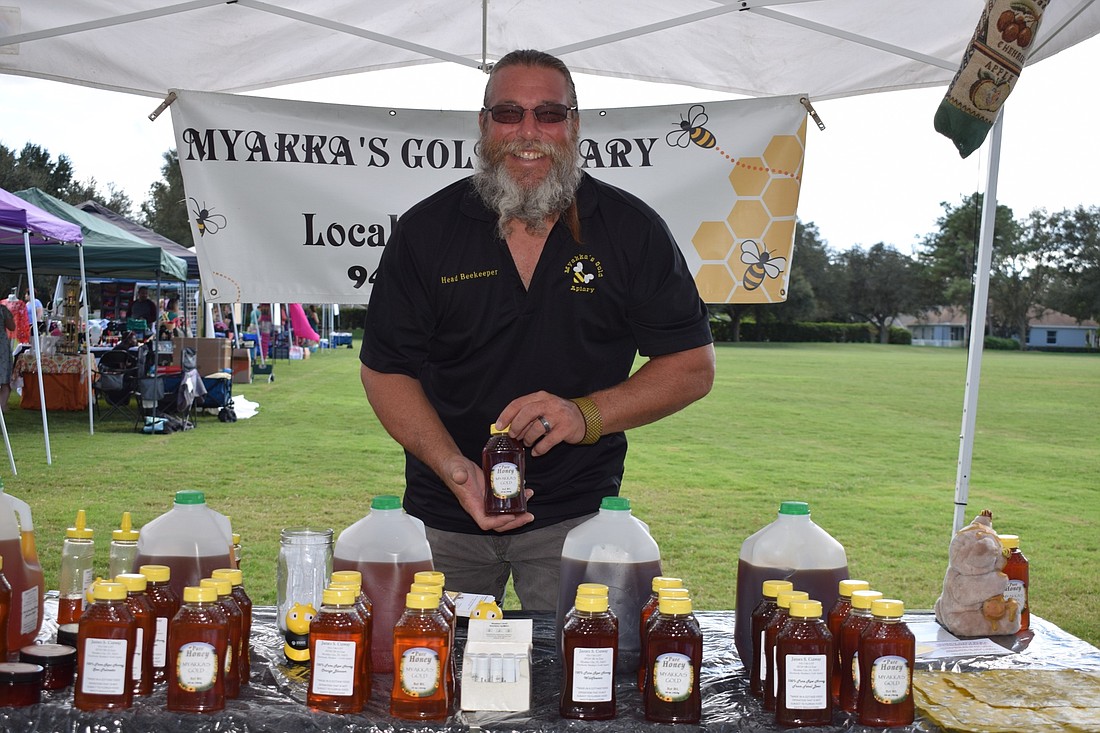- July 26, 2024
-
-
Loading

Loading

When Greenbrook resident Courtney Cooper found a bee colony on cable equipment close to her front yard, she, like many others who encounter bees, grew concerned over the possibility of people getting stung.
“The beehive is five feet away from the sidewalk,” she said.
Her worries grew as Halloween approached, when children would be out trick-or-treating.
But Lakewood Ranch beekeeper Caroline Wetherington said that bees won’t usually sting unless a person is standing in the path of their hive or tries to get into the hive.
“Their natural instinct is to protect the queen,” Wetherington said. “Normally, bees won’t go after you if you’re standing five or six feet away.”
Wetherington, the founder of nonprofit Bee Love Rescue, has been stung hundreds of times to the point where she doesn’t swell when stung. Of course, she is in the business.
Her message is more to stay aware and that things should be fine.
“A lot of people will say, ‘I got stung as a kid and had a big, bad reaction,’ but the reaction was a bump,” she said. “Sometimes we have these ideas that a bee sting is going to be dangerous, but for most people, it’s not.”
“If you’re not allergic to bee stings, the average person can tolerate 10 stings per one pound of body weight,” according to an article from Terminix, a national exterminator company. “Most adults can tolerate more than 1,000 stings, although 500 stings may be fatal for children.”
Wetherington said that when people find bee colonies around their homes, their first instinct is to spray them, but once bees are sprayed, they can’t be rescued and relocated.
James Cutway, the president of the Suncoast Beekeepers Association and owner of Myakka’s Gold Apiary, has simple instructions: Don’t spray, and let them be.
“A lot of people are quick to try to spray,” he said. “The only thing they’re going to do is get a few bees on the outside and probably get stung.”
Wetherington even suggests taking a picture of the bees to get confirmation what kind they are.
The next step is to call a licensed registered beekeeper for relocation. Suncoast Beekeepers Association (746-1597), a nonprofit dedicated to the education, encouragement and mentoring of people who want to know more about honeybees, has a list of beekeepers registered for relocation.
Bee colonies can be found in trees, communication boxes below and above ground, boats, house eaves and under sheds.
Cutway said that relocation methods change depending on the location of the colony, but open-air colonies, which are colonies exposed to the elements, are relatively easy to relocate.
“I get them healthy and strong,” he said about the time after he moves them. “Then they go out into one of the bee yards.”
Cooper said the bees around her home were believed to be Africanized honeybees, but Cutway said it’s virtually impossible to tell the difference from European honeybees by sight.